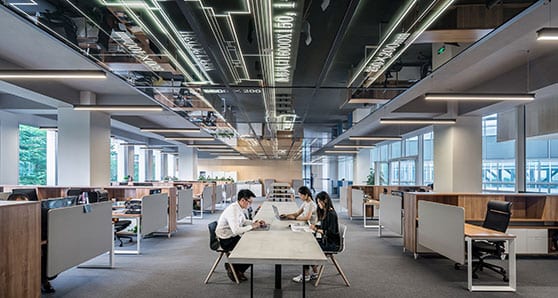The downtown office markets in Calgary and Edmonton will continue to be challenged this year with real estate vacancy rates forecast to rise, according to real estate firm CBRE.
In a report released Tuesday, CBRE said Calgary’s downtown office vacancy rate is expected to rise to 29.1 per cent this year from 27.2 per cent in 2019 while Edmonton will see a hike to 21.1 per cent from 20.1 per cent last year.
“Stakeholders continue to look for solutions to the historically high vacancy rates in downtown Calgary. The repurposing of empty offices into other uses has been the most widely discussed solution, however challenges with this strategy remain. These include non-viable floorplates, complex construction and a lack of 100 per cent vacant properties. While few candidate buildings may proceed, the number of viable conversions is limited and will only have a minor impact on the 11.5 million square feet of vacant space downtown,” said the report.
It said the suburban office market in Calgary will experience a slight drop in its vacancy rate from 20.5 per cent in 2019 to 20.3 per cent this year. Also, the industrial real estate market is expected to see its availability rate fall from 8.8 per cent last year to 8.1 per cent in 2020. Investment sales in the Calgary market are forecast to rise to $2.8 billion from $2.6 billion this year.
The report said another industrial development cycle is coming to a close after nearly 3.2 million square feet of new space was delivered in 2019.
“Elevated new supply has meant that, despite 12 consecutive quarters of positive absorption and a healthy market, the availability rate increased in 2019. As this development cycle subsides, elevated demand should result in the availability rate reaching an inflection point in 2020,” said CBRE.
“While office development has come to a halt in recent years, cranes dominate the city with the construction of rental apartment buildings rather than commercial towers. The multifamily market has become increasingly competitive due to economic uncertainty driving homeowners to rental units, new mortgage stress test regulations limiting the ability to buy and unique amenities attracting tenants. Multifamily assets will continue to be amongst the most sought-after investments in 2020.”
CBRE said Edmonton’s suburban office vacancy rate is expected to fall to 17.7 per cent this year from 18.6 last year while the industrial real estate availability rate will rise from 8.2 per cent to 8.3 per cent. Investment sales in the market are expected to drop from $3.5 billion in 2019 to $2.8 billion in 2020.
“Across all asset classes, tenants are demanding more from their built premises. Landlords not adapting and ensuring that their buildings meet evolving tenant demands will be left behind. Particularly important for purpose-built multifamily rental product, amenity spaces need to be well planned to create an environment that will draw tenants,” said CBRE of the Edmonton market.
“As property taxes continue to increase in the City of Edmonton, industrial tenants have taken the lead in beginning to consider more cost-effective options, including new facilities in surrounding communities. The lower tax environments of Nisku, Leduc and Acheson can result in rent differentials of $1.00 to $2.00 per square feet, which can often materially impact site selection processes.
“With world-class AI research and development at the University of Alberta, talent is flocking to the city and boosting the footprint of the technology industry in Edmonton. Over the past five years, Edmonton has seen a 25.7 per cent increase in tech talent, with over 28,400 technology workers in the city. This growth trajectory is expected to continue and will be a main driver of the office market.”
At the national level, CBRE said the country’s commercial real estate market is entering 2020 with strong momentum, setting the stage for what could be an unprecedented $50-billion year in investment volume, the highest on record.
“A relentless bull market, macroeconomic tailwinds and supportive immigration policies have allowed Canada’s commercial real estate market to gather serious velocity heading into the new decade,” said CBRE Canada Vice Chairman Paul Morassutti, in a news release. “There are challenges ahead, including rising rents, limited office and industrial space, new technologies and the all-important issue of climate change. But ingenuity across our industry has demonstrated that creative solutions and skillful management of these issues can ensure the real estate market’s ongoing success.”

